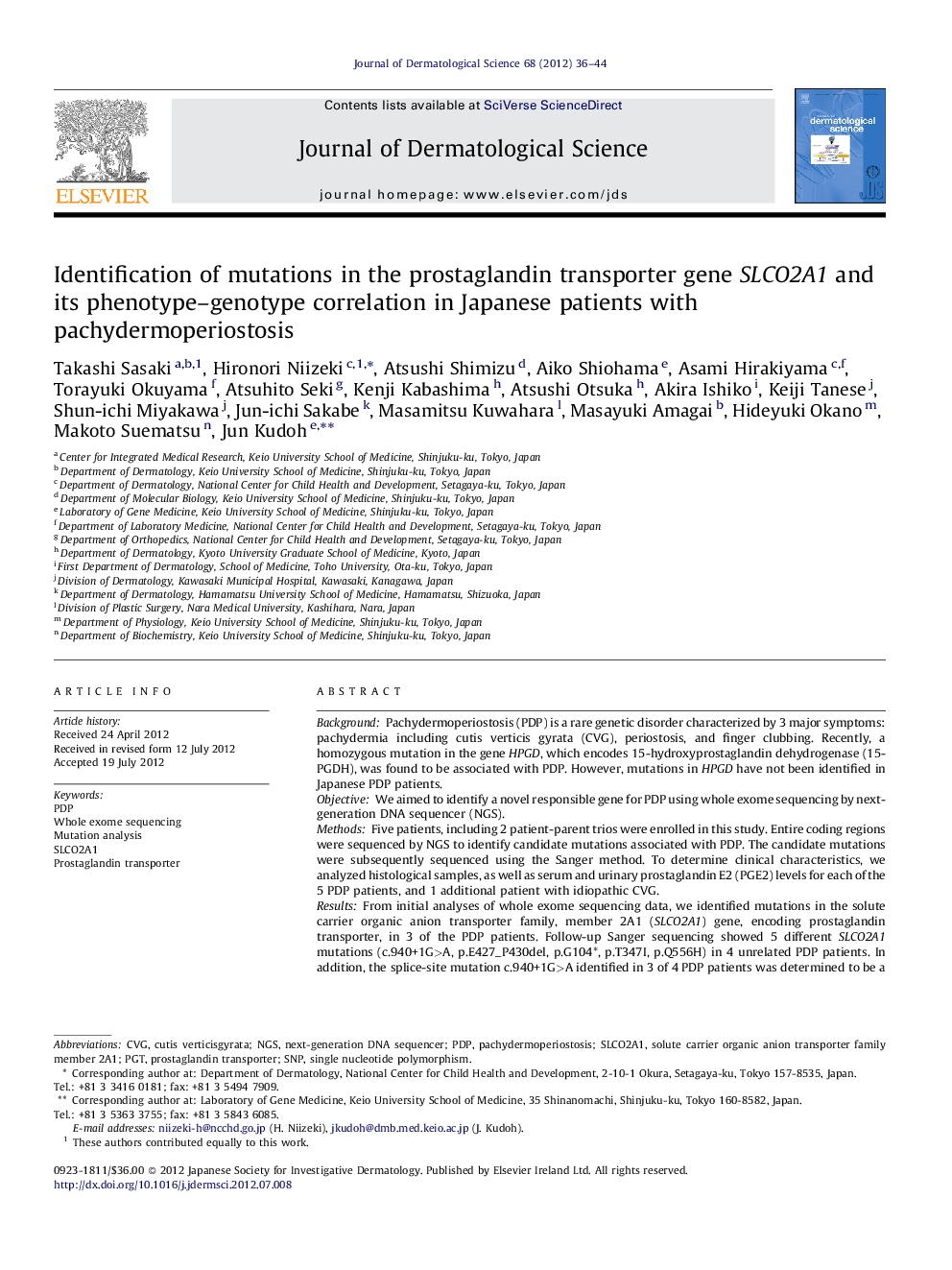| کد مقاله | کد نشریه | سال انتشار | مقاله انگلیسی | نسخه تمام متن |
|---|---|---|---|---|
| 3213293 | 1203224 | 2012 | 9 صفحه PDF | دانلود رایگان |

BackgroundPachydermoperiostosis (PDP) is a rare genetic disorder characterized by 3 major symptoms: pachydermia including cutis verticis gyrata (CVG), periostosis, and finger clubbing. Recently, a homozygous mutation in the gene HPGD, which encodes 15-hydroxyprostaglandin dehydrogenase (15-PGDH), was found to be associated with PDP. However, mutations in HPGD have not been identified in Japanese PDP patients.ObjectiveWe aimed to identify a novel responsible gene for PDP using whole exome sequencing by next-generation DNA sequencer (NGS).MethodsFive patients, including 2 patient-parent trios were enrolled in this study. Entire coding regions were sequenced by NGS to identify candidate mutations associated with PDP. The candidate mutations were subsequently sequenced using the Sanger method. To determine clinical characteristics, we analyzed histological samples, as well as serum and urinary prostaglandin E2 (PGE2) levels for each of the 5 PDP patients, and 1 additional patient with idiopathic CVG.ResultsFrom initial analyses of whole exome sequencing data, we identified mutations in the solute carrier organic anion transporter family, member 2A1 (SLCO2A1) gene, encoding prostaglandin transporter, in 3 of the PDP patients. Follow-up Sanger sequencing showed 5 different SLCO2A1 mutations (c.940+1G>A, p.E427_P430del, p.G104*, p.T347I, p.Q556H) in 4 unrelated PDP patients. In addition, the splice-site mutation c.940+1G>A identified in 3 of 4 PDP patients was determined to be a founder mutation in the Japanese population. Furthermore, it is likely that the combination of these SLCO2A1 mutations in PDP patients is also associated with disease severity.ConclusionWe found that SLCO2A1 is a novel gene responsible for PDP. Although the SLCO2A1 gene is only the second gene discovered to be associated with PDP, it is likely to be a major cause of PDP in the Japanese population.
Journal: Journal of Dermatological Science - Volume 68, Issue 1, October 2012, Pages 36–44